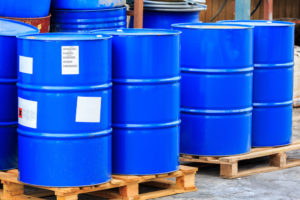In our Increase Profits with Batch Manufacturing Software blog, we quickly overviewed the top four things you can do with the help of batch manufacturing software, such as Vicinity, to ensure your organization is getting the most out of the operations in your existing business, without changing much of what you are doing today. One of the first things you can do is review and reducing inventory shrinkage.
One of the next steps you can take to improve your existing business operations is reducing formula loss.
Formula manufacturers live and die by yields. If your product mix yields vary significantly from standard, there are a number of areas that will be affected. If a formula requires more material than expected to get the same finished goods, you may experience raw material shortages, delayed shipments of finished goods, an increase in expedited orders through production, or increases in QC additions to bring a product within specification.
Each of these situations affects your company’s overall profits. Additionally, if the actual formula yield is not in line with theoretical yields, it is probable that you are not experiencing the margins you were expecting. If you experience higher than average losses for a formula, you are losing an opportunity for added profits.
Most formula manufacturers establish a theoretical production yield, or batch yield, once the formula for any given product has been running in production for a few months. However, after that time period, little attention is placed on the actual yield of the formula. It is extremely difficult, if not impossible, to analyze the factors that contribute to your formula loss, if you are not tracking your yield consistently and accurately. There are many factors that can contribute to formula loss, including your ingredients, equipment, process, and more.

What steps can you take to reduce formula loss?
-
- Identify loss by formula for previous 3 months
- Measure yield by comparing input vs. total output (including finished goods and intermediates) for the previous 3 months
- Make sure to only include batches that are closed and no future production is expected
- Target items that have the highest loss
- List formulas in order of highest loss value
- Identify loss by formula for previous 3 months
Loss % * Avg Selling Price/Cost * Production Volume = Potential Lost Revenue
-
-
- These items will yield the greatest results of change
- Focusing on items with a low loss, low cost or low volume will not yield results as high as items with high loss, high cost, and high volume
-
- Identify causes of loss
- Depending on the facility the human element is the one that has the highest degree of error – focus on what the material handler is having to do when making this formula
- Inquire if procedures have been changed or if any of the material packaging or handling instructions have changed
- Involve the R&D lab to calculate theoretical yields based on currently available raw materials
- Implement policies to track these formulas and note exceptions
- Mark the formula in such a way that for 3 months you can review the loss for each batch
- Make this a part of the final QC/packaging process
- Isolate any batches that have high losses and investigate the causes immediately
Software written specifically for the formula manufacturing industry can address these issues without customization. It is commonplace to review formula yield by batch and to aggregate the results by periods, such as a month or year. Users will immediately see if batch results are below those of prescribed standards. These results can also be noted for further evaluation over time. To learn more about Vicinity’s specialized manufacturing software solutions, contact us today.

